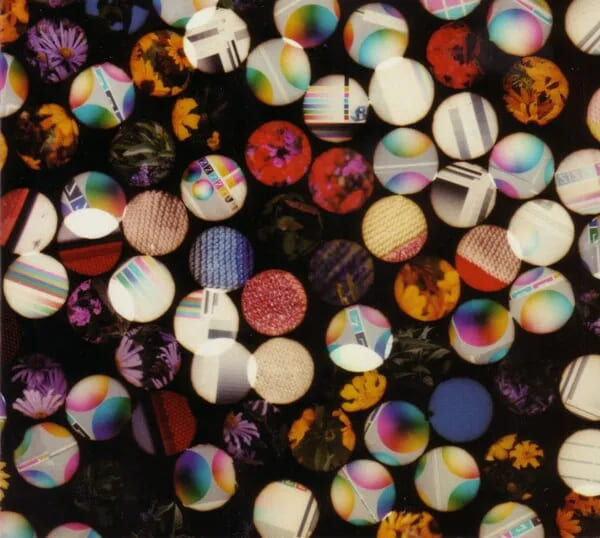
In a scene often dominated by spectacle, Four Tet has always moved in the opposite direction—subtle instead of loud, thoughtful instead of trendy, and timeless instead of trendy. Over two decades into his career, Kieran Hebden, the man behind Four Tet, continues to redefine what electronic music can be: experimental, emotional, rhythmic, and unpretentious.
Whether crafting glitchy folktronica in the early 2000s or building euphoric dancefloor journeys in recent years, Four Tet has never followed a scene—he’s quietly become one.
From Post-Rock to Post-Genre: The Early Years
Before he was known for crafting DJ sets that blend Burial with Britney Spears, Hebden was a guitarist in the post-rock band Fridge, and that genre-fluid curiosity has never left him.
His early solo work—particularly albums like Pause (2001) and Rounds (2003)—earned him the label “folktronica,” a term that felt both apt and limiting. These records fused acoustic instruments, found sounds, and jittery beat programming into something intimate yet forward-looking.
Tracks like My Angel Rocks Back and Forth and She Moves She weren’t designed for clubs. They were living room electronic music, meditative and tactile, drawing more from jazz and field recordings than techno or house. But the sonic palette Hebden explored in these albums laid the foundation for something much bigger.
A DJ, A Producer, A Listener First
By the late 2000s, Hebden’s live sets and DJ mixes were evolving. He embraced the rhythm-heavy language of club culture, but always filtered it through his own emotional lens. Collaborations with Burial, Thom Yorke, and Madvillain showcased his deep listening ability—Four Tet could slip between worlds without ever sounding like a tourist.
His 2010 album There Is Love in You was a turning point. With tracks like Love Cry and Angel Echoes, Four Tet bridged ambient sensitivity and deep groove. These weren’t just songs; they were emotional blueprints—tracks that could move you physically and spiritually.
The follow-up, Pink (2012), was even more club-oriented, drawing directly from the live energy he cultivated in DJ sets. But even as his music became more rhythmic, it never lost its subtlety.
Studio Monk, Digital Purist
Hebden is known for his minimalist studio setup. He works alone. He doesn’t rely on massive plugin chains or the latest tech trends. Many of his releases are crafted in simple digital environments with a few carefully selected tools.
This stripped-down approach gives his music space to breathe. A single hi-hat pattern or synth pulse can feel monumental in a Four Tet track—not because it’s loud or complex, but because nothing is wasted.
He also famously stays independent. Releasing music on his label Text Records, he avoids the traditional industry machinery. He drops albums unannounced. He engages directly with fans on social media. He lets the music speak.
Live Sets That Feel Like Journeys
Unlike many DJs, Four Tet’s sets are not about controlling a crowd—they’re about sharing a narrative. Whether performing at a festival, Boiler Room, or his now-famous Alexandra Palace show with Skrillex and Fred again.., he blends old and new, serious and playful.
He’ll drop a Burial track next to Kylie Minogue. He’ll shift from a pounding techno loop into a Boards of Canada ambient passage. His ability to read energy, not just tempo, makes his performances unforgettable.
Collaborator Without Ego
Despite his quiet profile, Four Tet has worked with some of the biggest names in music:
- Burial – Their collaborative EPs (Moth / Wolf Cub, Her Revolution / His Rope) feel like urban nocturnes.
- Skrillex & Fred again.. – Their unlikely trio headlined Coachella 2023 when Frank Ocean dropped out, proving Four Tet’s cultural reach extends beyond the underground.
- Thom Yorke – Hebden’s remixes and edits of Radiohead tracks are subtle and stunning, reframing familiar material with patience and precision.
Why Four Tet Still Matters
Four Tet’s career proves that you don’t need to be loud to be heard. He doesn’t chase trends, post viral gimmicks, or seek headlines. Yet his music remains essential, precisely because it resists commodification.
In a world of noise, he makes space. In an industry obsessed with novelty, he rewards deep listening.
And most importantly, in a genre often seen as cold or mechanical, Four Tet reminds us that electronic music can be deeply human.
Final Thoughts
Four Tet is not flashy, not overly prolific, and not part of any single movement. But his influence is everywhere—in the way producers think about space, in the way DJs build emotional arcs, and in the way audiences are learning to feel again through sound.
He doesn’t just make tracks—he creates moments. And those moments are what keep people coming back, year after year, beat after beat.
By Jenue,
writer and curator at Electronica Site, tracing the quiet pulse of modern electronic sound.



Questions, collabs, or just vibes? Hit us up
email: nica@electronica.site